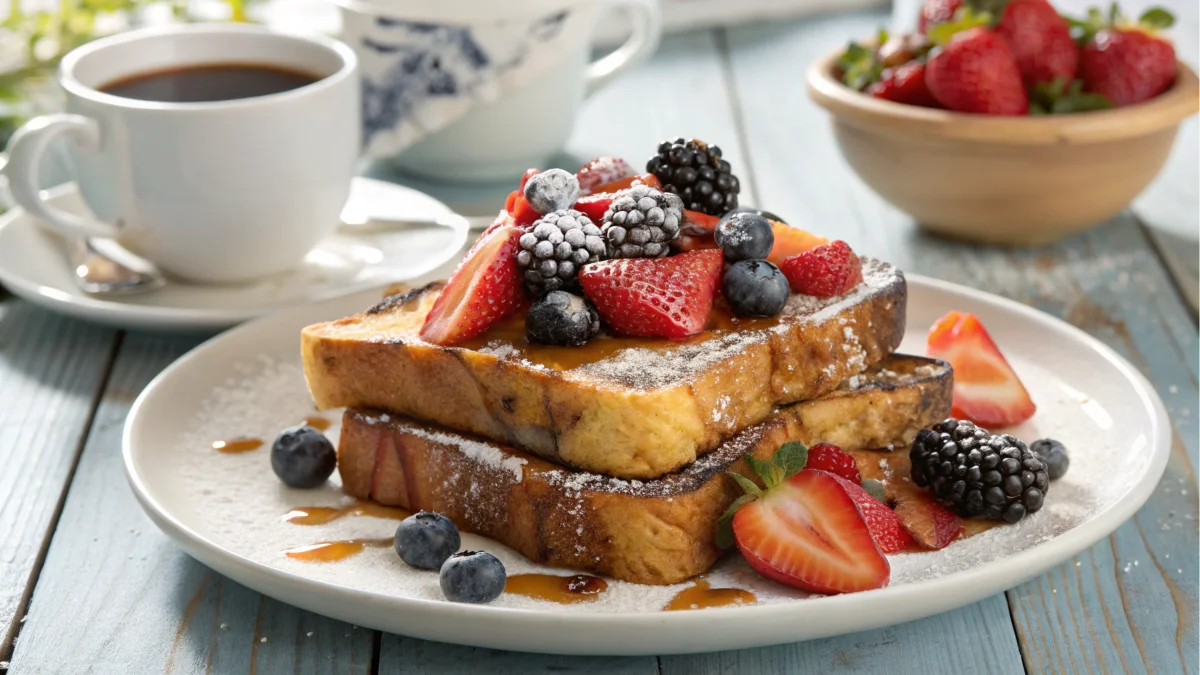French toast isn’t just breakfast—it’s an experience! There’s something magical about the way it combines crispy, buttery edges with a soft, custardy center. Moreover, with the McCormick French Toast Recipe naturally weaving in bold flavors like cinnamon and vanilla, it becomes an unforgettable meal. Additionally, we’ll show you how to make this comfort food staple even better. From choosing the best bread to trying out creative twists, this article is your ultimate guide to turning your mornings into a delightful treat.
Let’s get cooking—grab your spatula, your cinnamon, and your favorite bread, and let’s make magic happen!
Part 1: Introduction to McCormick’s French Toast Recipe
What Makes McCormick’s French Toast Recipe Unique?
You might be thinking, “French toast is just bread, eggs, and milk, right?” Sure, that’s the base. But the McCormick French toast recipe takes it to another level with its clever use of spices like ground cinnamon and pure vanilla extract. These ingredients don’t just enhance the flavor—they turn an ordinary breakfast into a symphony of warm, sweet, and cozy goodness.
Unlike some complicated recipes, McCormick keeps things simple. You won’t need fancy equipment or ingredients you’ve never heard of. Just the right mix of staples, a touch of creativity, and you’re good to go! And the best part? It’s quick enough for busy mornings but fancy enough to impress guests.
The Popularity of French Toast Across Cultures
French toast is one of those foods that has traveled the world and worn many hats. Did you know it’s been around since ancient Rome? Back then, it was a way to save stale bread. Fast forward to today, and it’s a breakfast superstar. From the classic pain perdu in France to creative stuffed versions in the U.S., French toast has become a beloved staple.
With the McCormick recipe, you’re not just making a meal—you’re joining a tradition that’s been perfected for centuries. Now, let’s move on to the story behind this delicious dish!
Part 2: A Brief History of French Toast
Ancient Roman Origins of French Toast
Believe it or not, French toast isn’t exactly…French. The earliest versions of this dish go all the way back to ancient Rome. Yep, way before cinnamon and vanilla were kitchen staples, the Romans were soaking bread in milk and frying it up. They called it “aliter dulcia,” which translates to “another sweet dish.” Pretty straightforward, huh?
This basic idea stuck around, and over time, different cultures added their own spins. Fast forward a few centuries, and French toast became a way to use up stale bread without wasting it. (Talk about being ahead of the zero-waste movement!)
Pain Perdu: The French Connection
Now, here’s where things get fancy. In France, they call it pain perdu, or “lost bread,” because it’s literally made to rescue day-old bread. The French perfected this recipe by using rich brioche and custard-like batters, making it extra indulgent.
When you whip up the McCormick French toast recipe, you’re building on these time-honored traditions, but with modern, bold flavors like McCormick’s ground cinnamon and pure vanilla extract.
Joseph French and the American Influence
There’s even a fun legend that says a man named Joseph French introduced this dish to America in 1724, but he forgot the apostrophe in “French’s Toast.” True or not, Americans loved it, and now it’s a breakfast classic! Thanks to McCormick’s recipe, you can bring that same classic charm to your table with just a few pantry staples.
Part 3: Key Ingredients in McCormick’s French Toast Recipe
Essential Ingredients for Flavorful French Toast
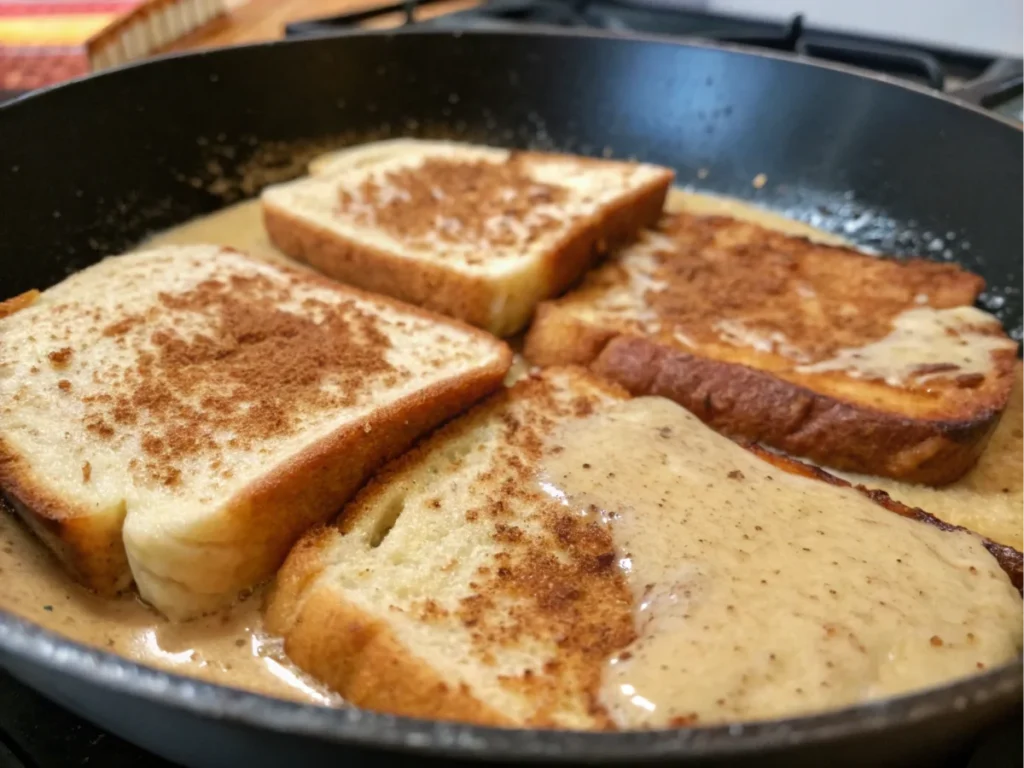
The secret to amazing French toast lies in its ingredients. Specifically, with the McCormick French Toast Recipe, you’ll use just a handful of kitchen staples that pack a serious flavor punch. Of course, the star players are McCormick ground cinnamon and McCormick all-natural pure vanilla extract. Together, these two ingredients add warmth and a hint of sweetness, making every bite simply irresistible.
Of course, you’ll also need the usual suspects—eggs, milk, and sugar. But don’t forget a pinch of salt! It might sound odd, but a little salt balances the sweetness and brings out the flavors.
Recommended Bread Types for Texture and Taste
Not all bread is created equal when it comes to French toast. If you want the ultimate breakfast treat, go for brioche, challah, or even sourdough. These breads soak up the batter without falling apart, giving you that perfect balance of crispy outside and custardy inside.
Pro tip: Use bread that’s a day or two old. Fresh bread can get soggy, but slightly stale bread holds its shape and soaks up all that cinnamon-vanilla goodness like a sponge. If you’re in a pinch, you can toast fresh bread in the oven for a few minutes.
Optional Additions for Enhanced Flavor
Looking to take things up a notch? The McCormick French Toast Recipe works beautifully with add-ins such as a splash of maple syrup in the batter, a sprinkle of nutmeg, or even a dollop of whipped cream. For instance, these simple additions can elevate the dish into a gourmet treat. On the other hand, if you prefer a savory twist, try adding a touch of garlic powder and pairing it with ham or cheese. Either way, you’ll end up with a delicious variation that’s sure to impress.
With these ingredients, your French toast will be anything but basic—it’ll be unforgettable.
Part 4: Step-by-Step Guide to McCormick’s Classic French Toast Recipe
Preparing the Batter
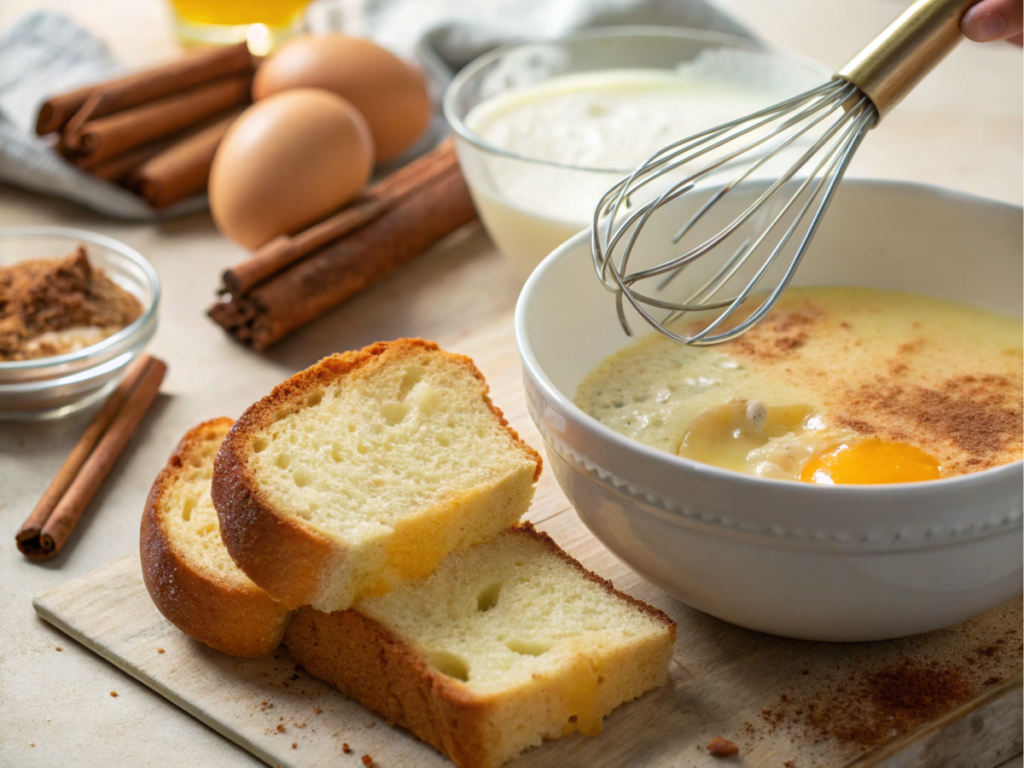
To start, you’ll need a bowl and a whisk—nothing fancy, just the basics. Crack your eggs into the bowl (three is perfect for a family-sized serving), then pour in a generous splash of milk. Add a teaspoon of McCormick ground cinnamon and a dash of McCormick pure vanilla extract. Whisk everything together until it’s smooth and smells like a warm hug.
For a little extra flair, you can toss in a pinch of nutmeg or a tablespoon of maple syrup. Trust me, it makes all the difference!
Choosing and Preparing the Bread
Now, grab your bread. Brioche or challah works best here, but any sturdy bread will do. Cut it into thick slices—about an inch thick—so it can soak up all that delicious batter. If your bread is fresh, pop it in the oven at 300°F for 10 minutes to dry it out a bit.
Once your bread is ready, dip each slice into the batter. Don’t just dunk it—let it soak for a few seconds so the bread absorbs all that cinnamon-vanilla goodness.
Cooking Techniques for the Perfect Toast
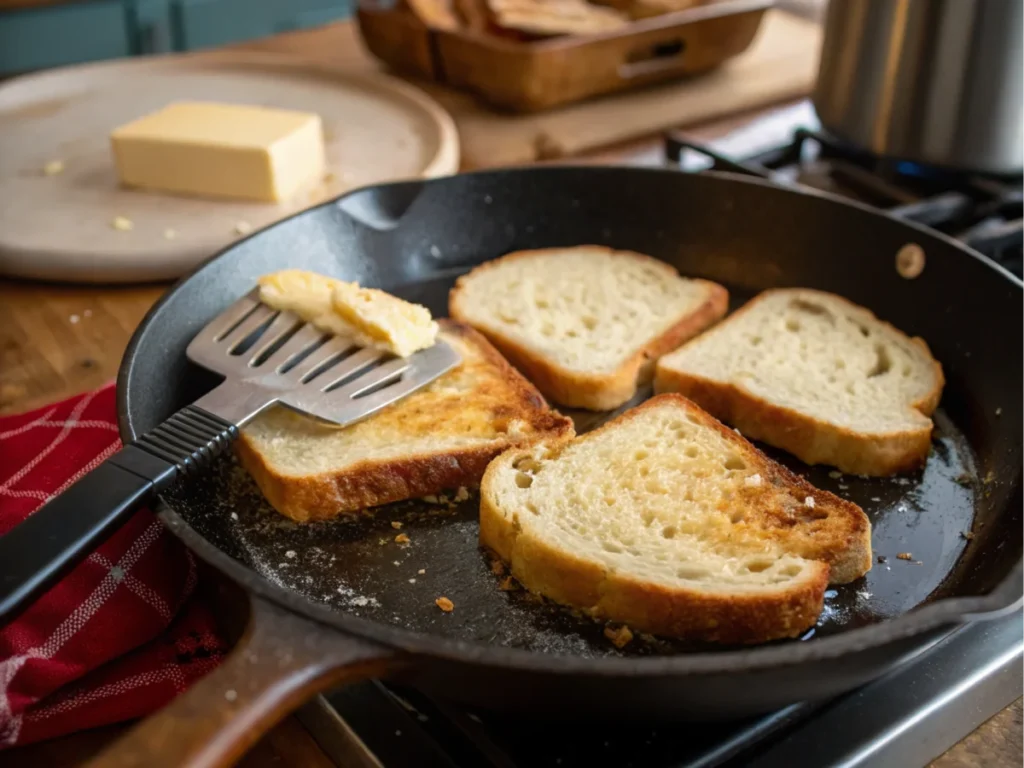
Heat a non-stick skillet or griddle over medium heat and add a knob of butter. Once the butter melts and starts to bubble, place your soaked bread slices onto the skillet. Cook each side for about 2-3 minutes, or until golden brown and slightly crispy.
Serve hot with your favorite toppings—for instance, fresh berries, powdered sugar, and maple syrup are always a win. Alternatively, for a savory twist, pair it with eggs and bacon.
For more delicious recipes like this, check out the Dinner Recipes page for inspiration!
Part 5: Creative Variations of McCormick’s French Toast Recipe
Overnight French Toast for a Make-Ahead Breakfast
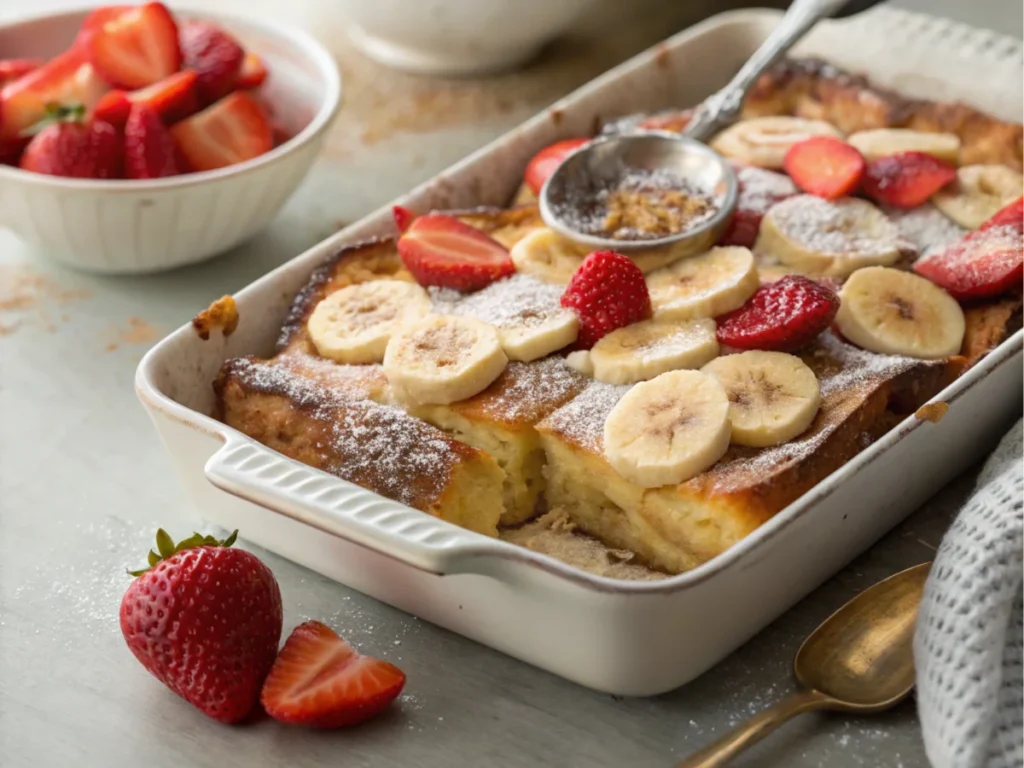
If mornings are chaotic at your house, overnight French toast is a lifesaver. Prep everything the night before—mix the batter using McCormick ground cinnamon and vanilla, then layer your bread slices in a baking dish. Pour the batter over the bread, cover, and refrigerate overnight.
In the morning, simply bake it at 350°F for 25-30 minutes. The best part? You’ll have a baked French toast casserole that’s perfectly crispy on top and delightfully custardy inside.
Stuffed French Toast: Sweet and Savory Twists
Stuffed French toast is where things get exciting. For a sweet version, mix cream cheese with a tablespoon of apricot preserves and a sprinkle of cinnamon. Spread the filling between two slices of bread before soaking them in your batter.
Prefer savory? Spread garlic butter on your bread and add a slice of ham or cheese for a flavor-packed breakfast. Then, cook it just like regular French toast, and voilà—you’ve got a whole meal in one delicious bite!
For more creative breakfast ideas, visit Dinner Recipes to keep the inspiration rolling!
With the McCormick French toast recipe and these fun variations, you’ll never run out of breakfast ideas. Your mornings are about to get a whole lot tastier!
Part 6: Tips for Perfecting the McCormick French Toast Recipe
How to Avoid Soggy French Toast
Nobody likes soggy French toast, right? Thankfully, the key is all about balance. To begin with, use bread that’s slightly stale—this helps it soak up the batter without falling apart. However, if you only have fresh bread, simply dry it out in the oven for 10 minutes at 300°F. This simple step ensures your French toast achieves the perfect texture.
Second, don’t let the bread linger too long in the batter. A quick soak is enough to coat it evenly without making it mushy. And finally, cook it low and slow. Medium heat is your friend here—high heat might give you a burnt crust but leave the inside undercooked.
Best Practices for Balancing Flavor and Texture
For that perfect texture, always use thick slices of bread (about 1 inch). Thin bread just can’t hold up to the batter. Adding a pinch of salt to your batter is another game-changer—it brings out the sweetness in the cinnamon and vanilla.
Want a pro tip? After cooking, let the toast rest on a wire rack for a minute before serving. This keeps it crispy and prevents it from getting soggy on the plate.
With these tips, your McCormick French toast recipe will turn out flawless every time. It’s so good, you might just find yourself making it every weekend!
Part 7: Serving Suggestions and Toppings
Traditional Toppings: Syrups and Fresh Fruits
Let’s talk toppings. Naturally, the classic choice is maple syrup—its warm sweetness pairs perfectly with the McCormick French Toast Recipe. In addition, you can add a handful of fresh berries like strawberries, blueberries, or raspberries for a pop of color and flavor. Together, these toppings create a beautiful and delicious breakfast treat.
Savory Pairings: Eggs, Ham, and Mustard Maple Syrup
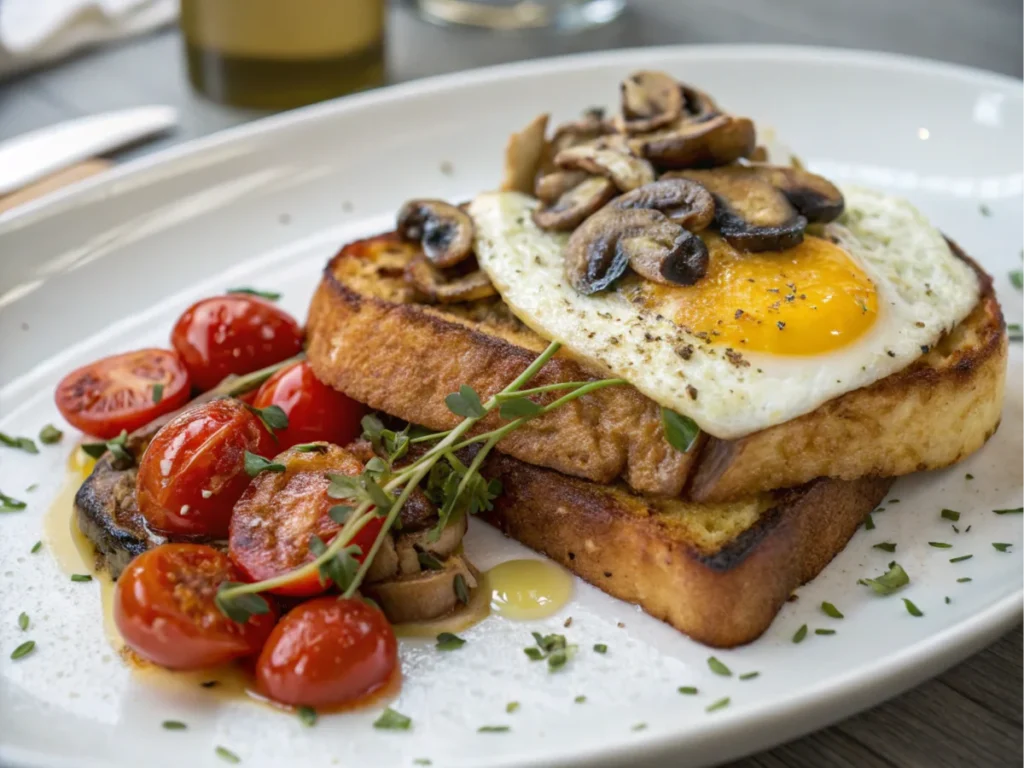
For those craving a savory spin, serve your French toast with a sunny-side-up egg and a slice of crispy bacon. If you’re feeling adventurous, whip up a mustard maple syrup by mixing a tablespoon of Dijon mustard with a quarter cup of maple syrup. Believe it or not, the combination is unexpectedly delicious and adds a bold twist to your breakfast!
Creating Instagram-Worthy Presentations
If you’re hosting brunch or simply want to dazzle your Instagram followers, presentation matters. To begin, stack your French toast slices neatly, dust them with powdered sugar, and add a sprig of mint or a drizzle of chocolate sauce for a touch of elegance. For the ultimate spread, serve it alongside freshly brewed coffee or bubbly mimosas. Believe me, it’ll be a feast that delights both the eyes and the taste buds!
For more fun breakfast ideas, check out Dinner Recipes. Whether you’re going classic or creative, this recipe guarantees a table full of happy faces!
Part 8: FAQs About McCormick French Toast Recipe
What’s the Best Bread for the McCormick French Toast Recipe?
The bread makes or breaks your French toast. Thick slices of brioche or challah are the gold standard—they’re rich, soft, and soak up the batter without turning soggy. If you want a heartier flavor, sourdough is another great option. And remember, slightly stale bread is always better!
Can French Toast Be Made in Advance?
Absolutely! The McCormick French toast recipe can easily be adapted for make-ahead prep. Assemble an overnight French toast casserole by layering bread in a dish, pouring the batter over it, and refrigerating it overnight. Bake it in the morning for a stress-free breakfast that still feels fancy.
How to Store and Reheat Leftover French Toast?
Got leftovers? No problem. Store your cooked French toast in an airtight container in the fridge for up to three days. When it’s time to reheat, skip the microwave (it makes the toast soggy) and pop it in a toaster or oven for crispy perfection.
For more tips and variations on French toast, head over to Dinner Recipes. You’ll never run out of ideas for your next breakfast feast!
Part 9: Conclusion: Elevating Your Breakfast Game with McCormick
French toast is one of those dishes that never goes out of style, and with the McCormick French toast recipe, you’ve got a winner every single time. Whether you’re keeping it classic with maple syrup and fresh berries or trying fun twists like savory fillings and mustard maple syrup, there’s a version for everyone at the table.
Remember, the secret lies in the details: pick the right bread, add a dash of McCormick ground cinnamon, and don’t forget that pinch of salt to bring it all together. With the tips, variations, and serving suggestions we’ve covered, you’re fully equipped to whip up a breakfast that’s both easy and unforgettable.
Ready to take your mornings to the next level? Bookmark this recipe, share it with friends, and experiment with your own creative toppings and pairings. Plus, if you’re hungry for more, check out the Dinner Recipes page for even more inspiration to keep your kitchen buzzing with delicious ideas. Who knows? You might just discover your next favorite dish!
Now, go on—make your mornings magical with the McCormick French Toast Recipe. Your family, your guests, and let’s be honest, your taste buds, will thank you. So, grab your ingredients and get started. Happy cooking!

